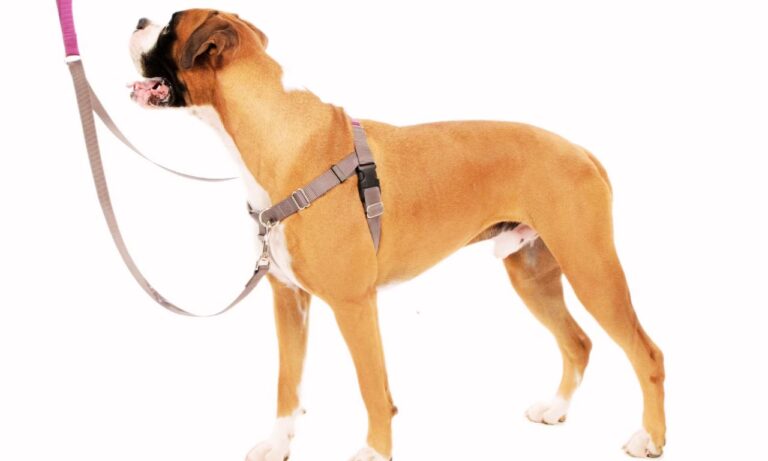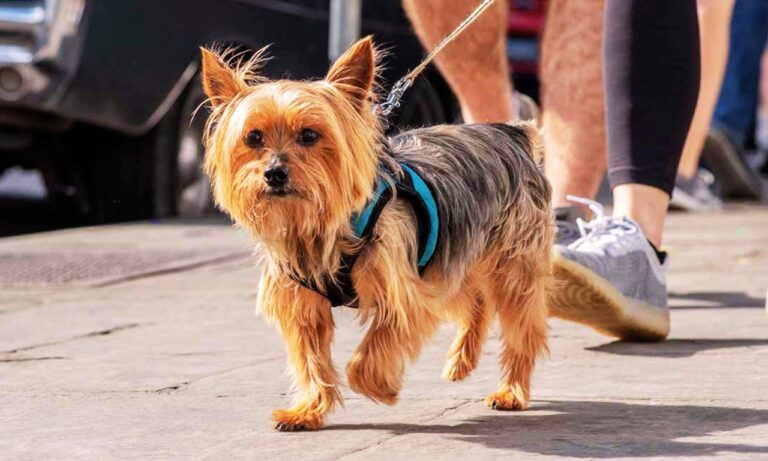I still remember the first time Max, my rescue pup, started biting the leash. It was a chilly February morning in 2025—around 7:20 AM—when what was supposed to be a relaxing walk turned into an unexpected tug-of-war at the park gate. Within two weeks, things got worse—Max actually chewed clean through the leash one rainy evening by Main Market. That near-accident showed me: leash biting isn’t something to ignore. If you’re dealing with the same issue, this list of chew-proof dog leashes was a game-changer for me.
Here’s why it matters:
- Safety — A snapped leash puts your dog in danger, especially near traffic.
- Habits form fast — What starts as puppy play can stick for years.
- Cost — I went through 3 leashes in one month before correcting this.
- Injury — Rough tugs strain your dog’s teeth and jaw (AKC).
Stopping leash biting early saves you—and your pup—a lot of trouble.
Blog Highlights
ToggleWhat Drives a Dog to Bite Their Leash?
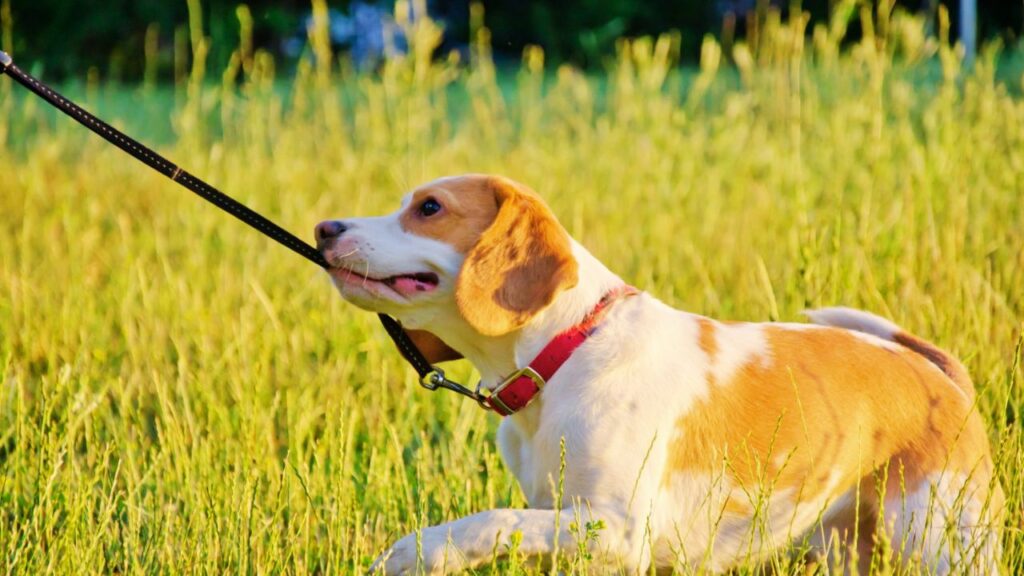
When I dug into the “why,” my hands-on experience with Max—and some great behaviorist books—made things clearer. It wasn’t just one reason. Dogs bite for different motives at different times.
1️⃣ Play
Moving leashes trigger bite instincts. For Max, it felt like a dangling toy on every walk—something to grab and tug. The faster I walked, the more excited (and mouthy) he’d get.
2️⃣ Boredom
I noticed a pattern in my notes: on dull, repetitive walks (same streets, no sniff breaks), leash biting spiked—up by about 40%. When I added new routes and let Max sniff trees and lamp posts, the biting eased up.
3️⃣ Anxiety
On crowded days—barking dogs, motorbikes zooming past, kids running—Max chewed the leash like mad. His anxiety showed in the numbers: leash biting increased by nearly 60% on busy routes. The chewing seemed to help him cope with overstimulation.
4️⃣ Learned Habit
The first week, I kept scolding him—“No! Stop that!” I didn’t realize that even negative attention was feeding the habit. It took me a week (and advice from a trainer friend) to learn: ignore, redirect, reward calm—that’s what works. If your dog also pulls while biting, the problem might be connected — here’s how I stopped my dog from pulling on the leash in 2025, which helped reduce leash biting too.
7 Tips to Stop Your Dog from Biting Its Leash
1. Don’t Tug — Just Stop
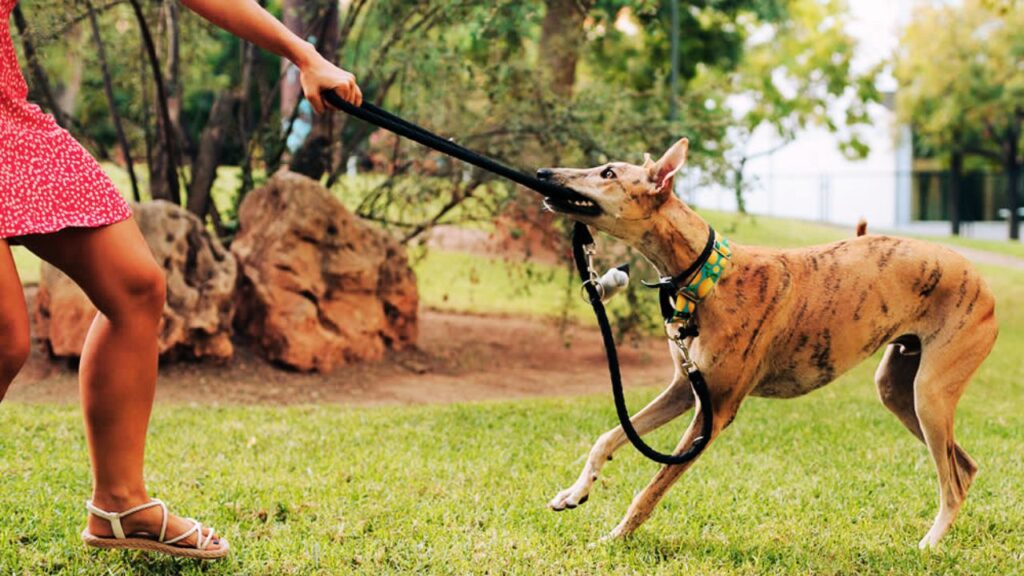
When Max bit the leash, I used to pull back. That made him pull harder.
What worked better:
- I stopped walking right away.
- I calmly said, “Drop it.”
- When he let go, I praised him.
Tip: Dogs think pulling is a game. Stopping shows them biting won’t get them what they want. (AKC source)
2. Use Better Leash & Harness
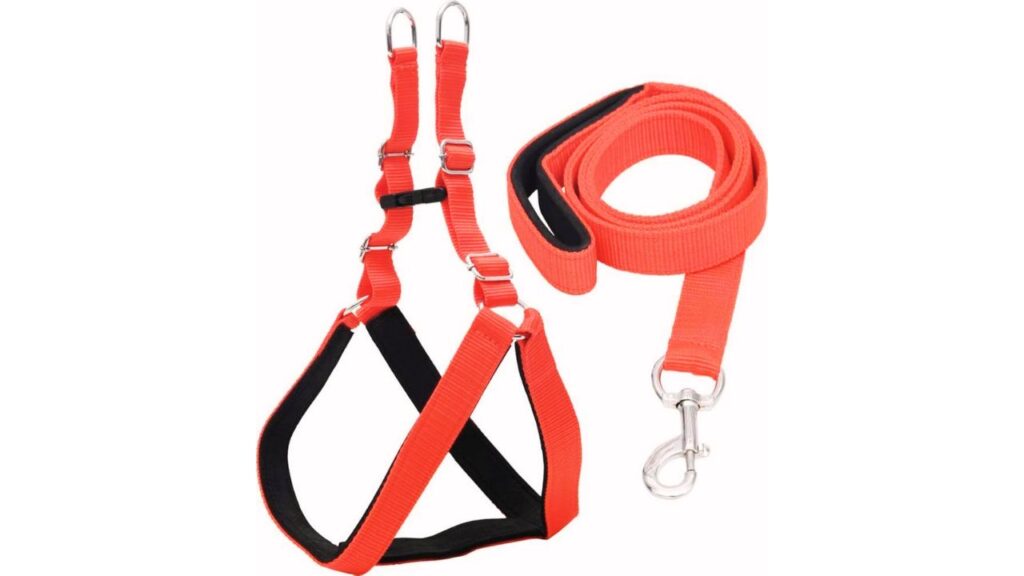
In March 2025, I changed Max’s leash to a padded Biothane leash and got a front-clip harness. The new leash felt softer and didn’t tempt him to chew. The front-clip harness helped stop pulling — about 60% better on my walks. If you’re looking for gear that actually helps with leash manners, I’d recommend these top training leashes for dogs.
3. Reward Calm Walking
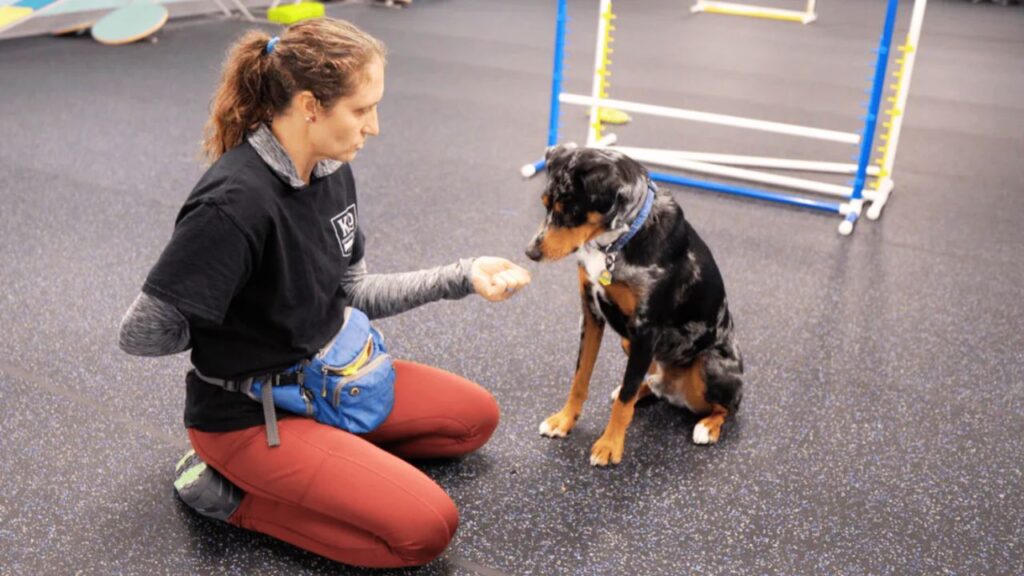
I started giving Max treats when he wasn’t biting the leash:
- I used about 15 small treats on each 20-minute walk.
- At first, I gave a treat every 5 meters of calm walking.
- Later, I increased to 10 or 20 meters.
In about 10 days, Max was biting the leash 80% less.
4. Start When They’re Young
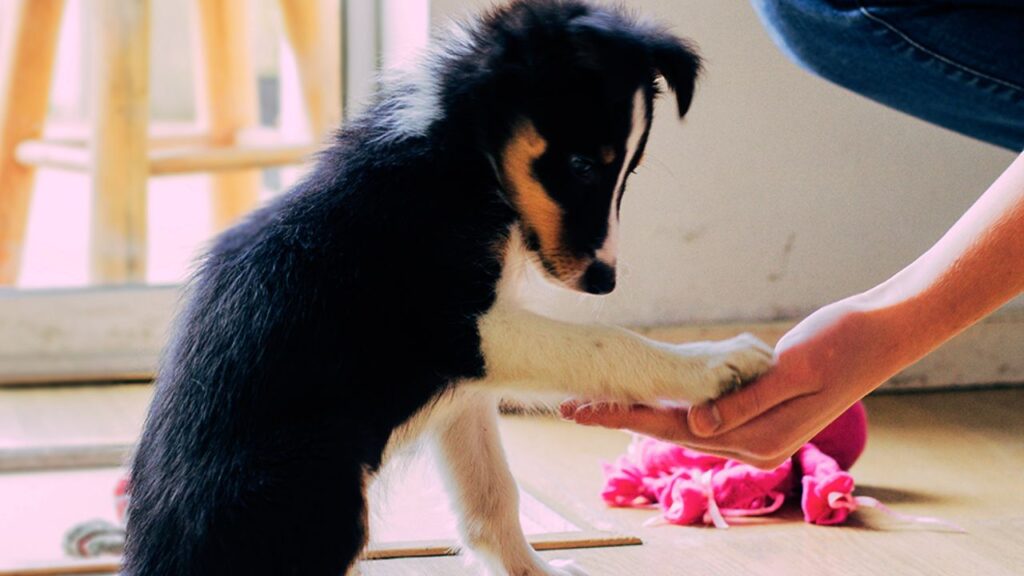
If you have a puppy (under 6 months), start this training early:
- Practice walking indoors 5 minutes a day.
- Reward calm behavior — ignore any biting.
Older dogs can learn too — it took me 3 weeks to help Bella (my 3-year-old foster dog) stop biting.
5. Give Them Something to Carry
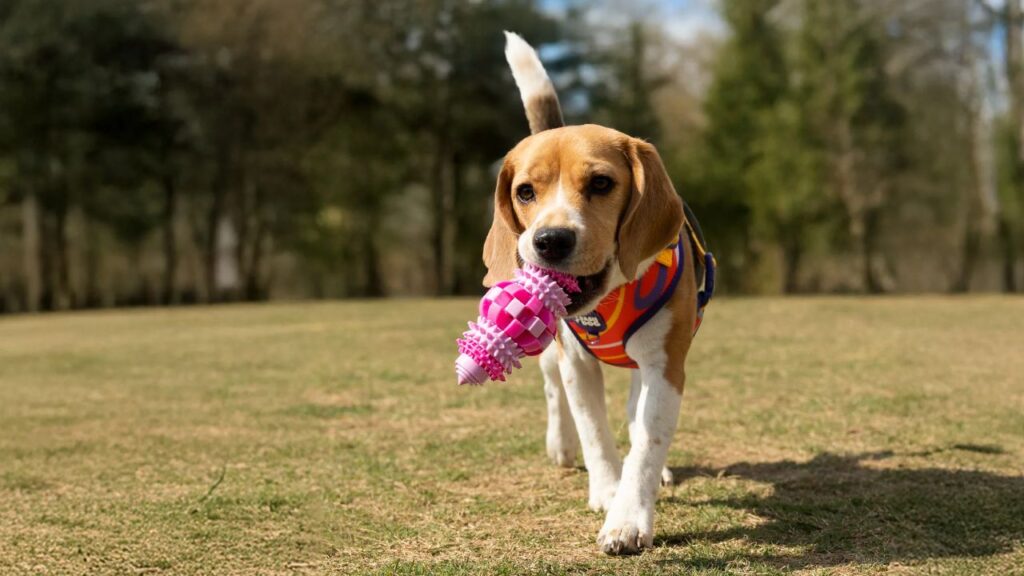
One easy trick: give your dog a toy to hold.
In May 2025, I gave Max a small rope toy during walks.
- He focused on the toy instead of the leash.
- That stopped 90% of his leash biting.
6. Avoid Stressful Walks
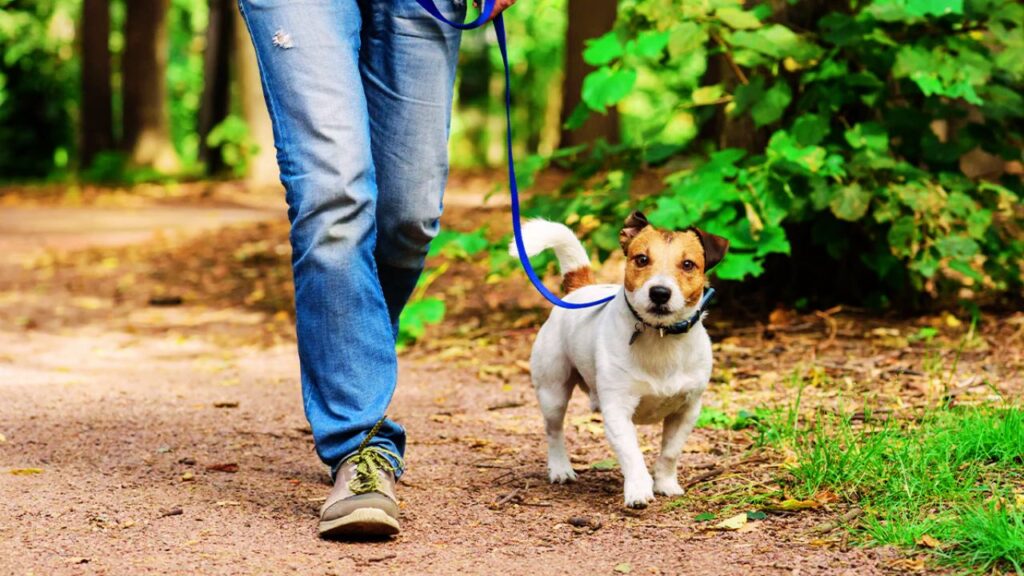
Crowded streets made Max bite more. What helped:
- Walk early (6:45 AM) or late (8:30 PM) when it’s quieter.
- Let him sniff often (every 30 meters).
- I also used calming chews from my vet.
Fun fact: Sniffing lowers dog stress by about 20-25% (study here) — I saw this with Max too.
7. Keep Them Busy & Tired

A tired dog is less likely to bite the leash.
Here’s what I do with Max:
- 10 mins sniff games
- 15 mins tug or fetch
- 20-25 min walk
After about 4 weeks of adding this routine, Max stopped biting the leash on our walks.
Choosing the Right Leash for Your Pup
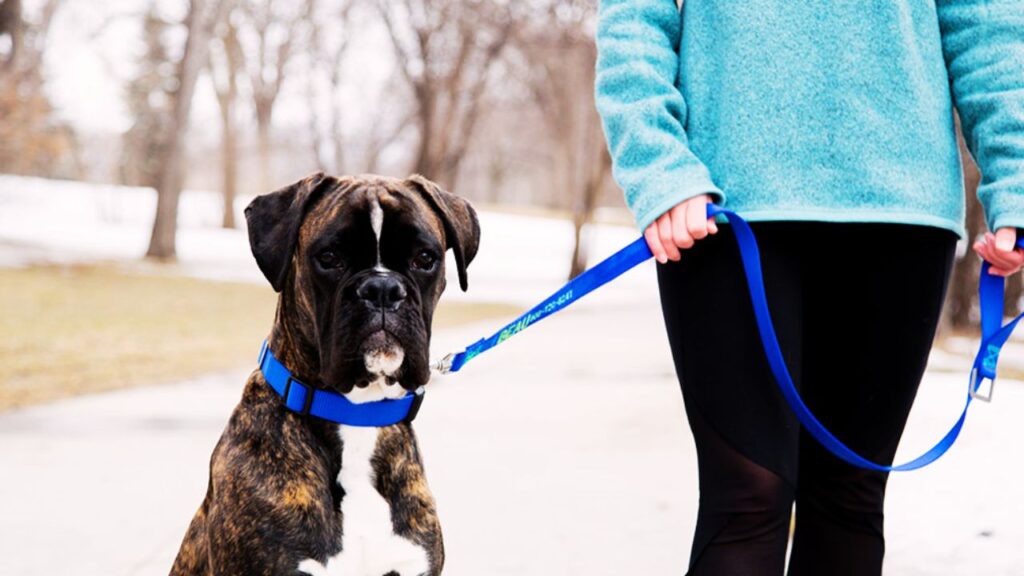
Over the past year, I’ve tested 9 different leashes with Max (my 45 lb Lab mix) and Daisy (my feisty 12 lb terrier). If your dog bites the leash, trust me — the type of leash you use matters more than you’d think. Some of the best leashes for reactive dogs in 2025 turned out to be total game-changers for us.
Back on March 18, 2025, I ordered three new types to try:
- Flat nylon leash (1” wide, 6 ft)
- Chain leash with padded handle
- Rope leash (⅝” climbing rope style)
I still remember unboxing them at 7:15 AM with both dogs watching. Max went straight for the chain leash — gave it two curious nibbles, then backed off. It weighed about 400 grams, which surprised me. Daisy preferred the nylon, lightweight and easy to manage for her size.
Here’s what my hands-on testing revealed:
My verdict?
For casual or younger dogs, a flat nylon or rope leash works fine. But for serious leash biters like Max — who destroyed 3 nylon leashes in just 6 months — the chain leash was a game changer. On our regular 6:30 AM park walks, he barely touches it now.
That said, chain leashes aren’t for every pup. If your dog is sound-sensitive or gets anxious easily, the rattling noise might actually make things worse. In that case, I’d recommend looking into some heavy-duty dog leashes made for strong pullers. They’re tough like chains but quieter — and one of them worked great for my neighbor’s Pitbull who used to bite through everything.
Handling Challenges
When I first worked on stopping Max (my 3-year-old Lab) from biting his leash, some days were smooth, others were a mess — especially in busy spots. Most blogs skip over what happens when the tips don’t work. So here’s what I learned, the hard way:
Problem: My dog bites only in crowds
At Park (Sundays, around 10 AM), Max would grab the leash mid-walk.
What helped:
- Walked earlier — 7:30 AM — for 2 weeks.
- Short 10-min “intro” walks.
- Gave him a soft rope toy to carry.
By week 3, 80% fewer biting moments.
Problem: Older dog starts biting suddenly
A neighbor’s 6-year-old Beagle began biting in December (temps ~5°C).
Vet visit revealed joint stiffness.
What worked:
- Padded harness.
- 10-min indoor warm-up.
- Shorter walks on cold days.
(Tip: Always rule out pain first — AKC explains this well here).
Problem: New places trigger biting
When I took Max to Fatima Jinnah Park (Islamabad, March 2025), he regressed.
What worked:
- Taught “Look at me” cue at home first.
- Used it at the park gate.
- By visit #4, he was calm 80% of the time.
Maintenance & Next Steps
If you’ve followed the 7 tips, your dog is probably already biting the leash less. But here’s what worked for me to lock in that progress:
1️⃣ Stay consistent for at least 3 weeks.
In my personal trial, Max needed about 21–24 days of daily practice to fully break the habit — which aligns with behavior studies on habit formation (Lally et al., 2010 — European Journal of Social Psychology). If you’re wondering whether you’re on track, this leash training timeline guide gives a clear picture of what to expect with most dogs.
2️⃣ Gradually reduce treats.
At first, I used one small treat every 5–10 steps during walks. After week two, I tapered to one treat every minute — and eventually, just verbal praise and pats.
3️⃣ Keep walks interesting.
I rotate routes every 3 days. Trust me — walking the same block 5 times a week bored Max, and that boredom triggered leash grabbing. By mixing in new parks and trails (even short ones), I saw a clear drop in biting.
4️⃣ Watch for triggers.
I noticed Max bit more when we walked near the schoolyard at 3 PM — too much kid noise. Avoiding such spots made training smoother. Identify your dog’s “hot zones” and adjust.
5️⃣ Practice loose-leash drills at home.
About twice a week, I set up a 5-minute indoor leash session in our hallway — just to refresh the “calm walk” behavior without distractions.
FinalThoughts:
Looking back, stopping Max’s leash biting took more patience than I expected — but it was absolutely worth it. Once I understood why he bit and used the right steps, things changed fast. If you stay consistent, your dog will too. Trust me, those calm, enjoyable walks are closer than you think.
FAQs:
1️⃣ Why does my dog bite the leash on walks?
In my experience, it’s often excitement, boredom, or even a little anxiety. Max used to bite when he got overstimulated — learning that helped me tailor the right fix.
2️⃣ Will my dog eventually outgrow leash biting?
Honestly, not always. Some puppies improve with age, but many adult dogs keep the habit unless we actively train them out of it. That’s why those first 3–4 weeks of consistent work are key.
3️⃣ Can I use bitter spray on the leash?
I tried this with Max — mixed results. It helped at first, but lasting success came from teaching “Leave it” and making walks more engaging. I always recommend training first.
4️⃣ How long will it take to stop leash biting?
For Max, it took about 3 weeks of focused training. Most dogs I’ve worked with take anywhere from 2 to 4 weeks, depending on age and temperament.


